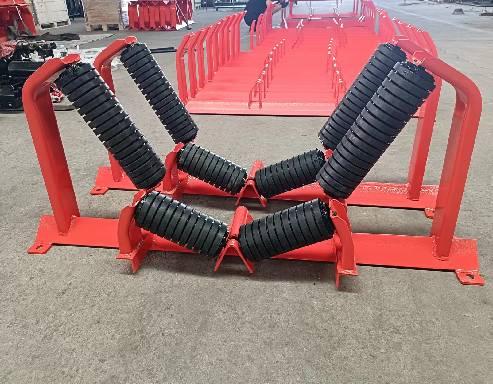 Afrikaans
Afrikaans  Albanian
Albanian  Amharic
Amharic  Arabic
Arabic  Armenian
Armenian  Azerbaijani
Azerbaijani  Basque
Basque  Belarusian
Belarusian  Bengali
Bengali  Bosnian
Bosnian  Bulgarian
Bulgarian  Catalan
Catalan  Cebuano
Cebuano  Corsican
Corsican  Croatian
Croatian  Czech
Czech  Danish
Danish  Dutch
Dutch  English
English  Esperanto
Esperanto  Estonian
Estonian  Finnish
Finnish  French
French  Frisian
Frisian  Galician
Galician  Georgian
Georgian  German
German  Greek
Greek  Gujarati
Gujarati  Haitian Creole
Haitian Creole  hausa
hausa  hawaiian
hawaiian  Hebrew
Hebrew  Hindi
Hindi  Miao
Miao  Hungarian
Hungarian  Icelandic
Icelandic  igbo
igbo  Indonesian
Indonesian  irish
irish  Italian
Italian  Japanese
Japanese  Javanese
Javanese  Kannada
Kannada  kazakh
kazakh  Khmer
Khmer  Rwandese
Rwandese  Korean
Korean  Kurdish
Kurdish  Kyrgyz
Kyrgyz  Lao
Lao  Latin
Latin  Latvian
Latvian  Lithuanian
Lithuanian  Luxembourgish
Luxembourgish  Macedonian
Macedonian  Malgashi
Malgashi  Malay
Malay  Malayalam
Malayalam  Maltese
Maltese  Maori
Maori  Marathi
Marathi  Mongolian
Mongolian  Myanmar
Myanmar  Nepali
Nepali  Norwegian
Norwegian  Norwegian
Norwegian  Occitan
Occitan  Pashto
Pashto  Persian
Persian  Polish
Polish  Portuguese
Portuguese  Punjabi
Punjabi  Romanian
Romanian  Russian
Russian  Samoan
Samoan  Scottish Gaelic
Scottish Gaelic  Serbian
Serbian  Sesotho
Sesotho  Shona
Shona  Sindhi
Sindhi  Sinhala
Sinhala  Slovak
Slovak  Slovenian
Slovenian  Somali
Somali  Spanish
Spanish  Sundanese
Sundanese  Swahili
Swahili  Swedish
Swedish  Tagalog
Tagalog  Tajik
Tajik  Tamil
Tamil  Tatar
Tatar  Telugu
Telugu  Thai
Thai  Turkish
Turkish  Turkmen
Turkmen  Ukrainian
Ukrainian  Urdu
Urdu  Uighur
Uighur  Uzbek
Uzbek  Vietnamese
Vietnamese  Welsh
Welsh  Bantu
Bantu  Yiddish
Yiddish  Yoruba
Yoruba  Zulu
Zulu conveyor system parts
Understanding Conveyor System Parts A Comprehensive Overview
Conveyor systems are vital components in various industries, streamlining processes and enhancing efficiency. From manufacturing facilities to distribution centers, these systems aid in the automation of material handling. To appreciate the functionality of conveyor systems, it is essential to understand their key parts. This article outlines the fundamental components of conveyor systems, their functions, and their significance in industrial applications.
1. Conveyor Belts
The conveyor belt is perhaps the most recognizable part of a conveyor system. It is a continuous loop of material—usually rubber, plastic, or metal—that moves products from one location to another. Conveyor belts are designed to withstand various conditions, including heat, moisture, and heavy loads. The choice of the material and design depends on the specific needs of the operation. For instance, in food processing, hygienic belts are used, while heavy industries may use steel belts for durability.
2. Drive Mechanisms
The drive mechanism powers the conveyor system, providing the necessary movement to transport materials. This can involve electric motors or hydraulic systems that convert energy into motion. The drive can be located at one or both ends of the conveyor and can also incorporate pulleys to guide the belt. Proper maintenance of drive systems is crucial, as they directly impact the efficiency and longevity of the conveyor.
Pulleys play a critical role in supporting and guiding the conveyor belt. Typically found at the ends of the conveyor, they help maintain tension and alignment. There are several types of pulleys, including drive pulleys, which are powered by the drive mechanism, and return pulleys, which allow the belt to return to its starting position. Rollers, on the other hand, support the weight of the material on the conveyor and reduce the friction that can impede motion. They are often used in conjunction with pulleys to ensure smooth operation.
4. Idlers
conveyor system parts

Idlers are similar to rollers but serve the specific purpose of carrying the conveyor belt and maintaining its alignment. They are strategically placed along the conveyor path to provide support and stability, especially in long conveyor systems. By minimizing sagging and ensuring the belt remains taut, idlers contribute to efficient material handling and prolong the life of the belt.
5. Frame and Structure
The frame of a conveyor system provides the necessary support and stability for all other components. Typically constructed from metal, the frame must be robust enough to bear the weight of the materials being transported. Additionally, the frame design can affect the overall footprint and layout of the conveyor system, allowing for adjustments based on available space in a facility.
6. Sensors and Controls
Modern conveyor systems often incorporate advanced sensors and controls for optimization. Sensors can monitor weight, speed, and material flow, ensuring that the system operates smoothly and efficiently. Control systems, including programmable logic controllers (PLCs), manage these sensors and help operators monitor performance. This integration enables real-time adjustments to prevent jams, reduce downtime, and enhance overall productivity.
7. Safety Features
Ensuring the safety of workers and equipment is paramount in any conveyor system. Various safety features, such as emergency stop buttons, safety guards, and sensors that detect obstructions, play vital roles in preventing accidents. Regular maintenance of these safety components is essential to ensure they function correctly and protect personnel.
8. Conclusion
Understanding the parts of a conveyor system is crucial for anyone involved in material handling or industrial operations. Each component serves a distinct purpose, working in harmony to create an efficient transportation solution. From the conveyor belt to drive mechanisms, pulleys, and safety features, every element contributes to the system's overall performance. As industries continue to evolve and prioritize automation, the role of conveyor systems and their components will become increasingly significant, highlighting the need for proper design, maintenance, and integration of these systems in modern operations. By recognizing the importance of each part, businesses can enhance productivity, reduce costs, and ensure a safe working environment.
-
Revolutionizing Conveyor Reliability with Advanced Rubber Lagging PulleysNewsJul.22,2025
-
Powering Precision and Durability with Expert Manufacturers of Conveyor ComponentsNewsJul.22,2025
-
Optimizing Conveyor Systems with Advanced Conveyor AccessoriesNewsJul.22,2025
-
Maximize Conveyor Efficiency with Quality Conveyor Idler PulleysNewsJul.22,2025
-
Future-Proof Your Conveyor System with High-Performance Polyurethane RollerNewsJul.22,2025
-
Driving Efficiency Forward with Quality Idlers and RollersNewsJul.22,2025





























